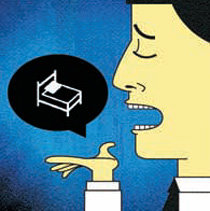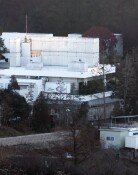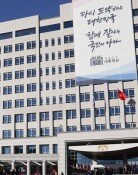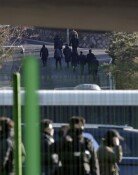Negative ions
Negative ions
Posted May. 19, 2018 07:22,
Updated May. 19, 2018 07:22

There was a fever of negative ions sweeping across Korea in the 1990s. The origin of the fever was Japan where the media carried news reports suggesting “negative ions kill germs and purify air” for the first time in the world. The perceived benefits of negative ions were exaggerated and snowballed to include purification of blood, revitalization of cells, reducing of pain, boosting of immunity and easing of stress. A wide variety of products that were claimed to be healthy, including massage machines, hot bathing tools, necklaces, panties, soaps, fragrance, bathing soap, yellow earth ondol (floor heating system), floor paper and wall paper, would hit the market in droves.
Seven of Daejin Bed’s mattresses that sparked controversy over radiation contamination lately have been confirmed to emit amounts of radiation exceeding the permissible levels. A reinvestigation by the Nuclear Safety and Security Commission has confirmed that certain beds emit radiation 9.35 times the annual permissible level of 1mSv. One X-ray shot on the chest exposes people to 0.1∼0.3mSv of radiation. Koreans’ annual average exposure to natural radiation is 3.6mSv. The cause of radiation on the beds was monazite, an ion-coordinated mineral used in the sponge of the mattresses.
The confirmation of radiation existing on the bed has shocked and angered consumers. The producer has recalled 61,000 beds, but the Korea Consumer Agency is receiving a string of inquires and complaints including applications for collective arbitration of dispute. “The Nuclear Safety and Security Commission has sent consumers into confusion by announcing that radiation exceeds the permissible levels only five days after releasing the interim outcome suggesting that radiation was safe,” said the Korea National Council of Consumer Organizations, urging the government to conduct investigation of all different living goods that have a high chance to generate radioactive materials, and devise countermeasures.
The science community calls negative ions pseudo-science because the health benefits of negative ions have not been scientifically validated. The U.S. Nuclear Regulatory Commission recommends consumers to immediately discard negative ion products made of monazite. The final report of the radiation safety and management survey, which was released early this year by the NSSC, clearly suggests that negative ion materials emit radiation. However, the government, which turned a blind eye to the report, has announced it will start investigation. As of today, negative ion products that are currently sold on the market number more than 180,000 items.
Kwang-Pyo Lee kplee@donga.com







